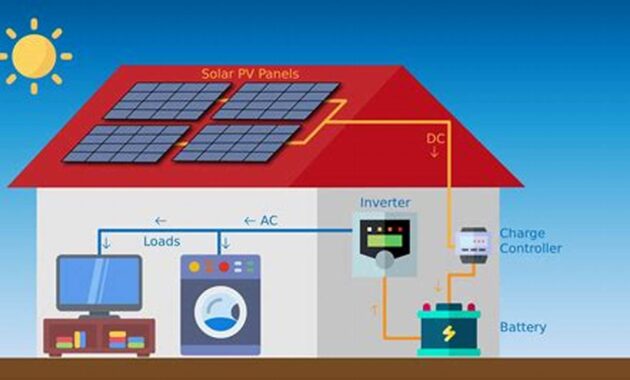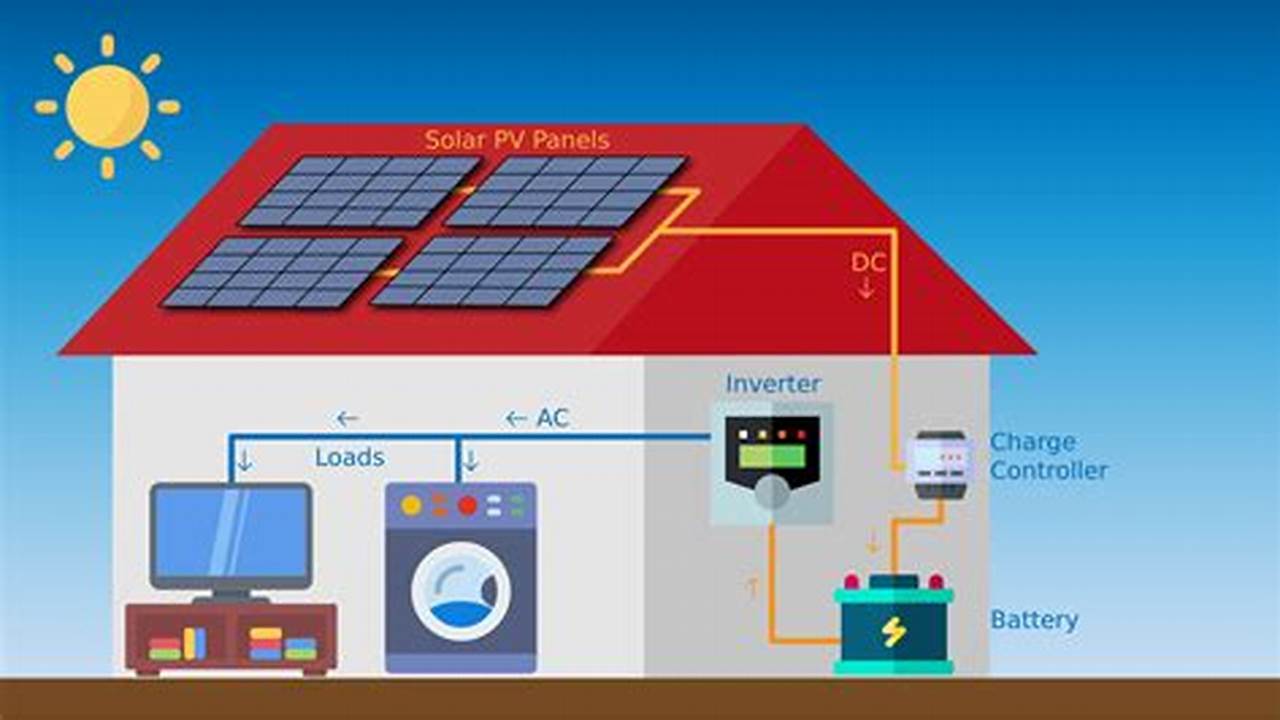
Designing an off-grid solar photovoltaic (PV) system involves creating a standalone power system that generates electricity from sunlight, typically for remote locations not connected to the electrical grid. This system comprises solar panels, batteries, charge controllers, and inverters, sized and configured to meet specific energy needs and ensure reliable power supply.
Off-grid solar PV systems offer several advantages. They provide access to clean, renewable energy, reducing reliance on fossil fuels and lowering carbon footprint. They are particularly beneficial in areas with limited or unreliable grid connectivity, enabling energy independence and enhancing resilience. Additionally, these systems can contribute to local economic development and improve the quality of life in remote communities.
Designing an off-grid solar PV system requires careful consideration of various factors, including energy consumption patterns, solar resource availability, battery capacity, and system efficiency. It is essential to conduct a thorough site assessment and energy audit to determine the optimal system size and components. Professional design and installation are recommended to ensure system safety, reliability, and long-term performance.
Frequently Asked Questions about Off-Grid Solar PV Systems
Off-grid solar photovoltaic (PV) systems offer unique advantages for locations without access to the electrical grid. However, several common questions and concerns arise regarding their design and implementation:
Question 1: How do I determine the size of my off-grid solar PV system?
A thorough energy audit is crucial to accurately determine the size of your off-grid solar PV system. This involves assessing your energy consumption patterns, considering factors such as the number of appliances, their usage duration, and the desired level of energy independence.
Question 2: What are the key components of an off-grid solar PV system?
The primary components of an off-grid solar PV system include solar panels, batteries, charge controllers, and inverters. Solar panels generate electricity from sunlight, batteries store the generated electricity, charge controllers regulate the charging process, and inverters convert the stored DC electricity into AC electricity for use in appliances.
Question 3: How do I ensure the reliability of my off-grid solar PV system?
To ensure the reliability of your off-grid solar PV system, it is essential to use high-quality components and follow proper design and installation practices. Regular maintenance and monitoring are also crucial to identify and address any potential issues promptly.
Question 4: What are the benefits of installing an off-grid solar PV system?
Off-grid solar PV systems provide numerous benefits, including energy independence, reduced reliance on fossil fuels, lower energy costs, increased property value, and environmental sustainability.
Question 5: How do I design an off-grid solar PV system for my specific needs?
Designing an off-grid solar PV system requires careful consideration of several factors, including energy consumption patterns, solar resource availability, battery capacity, and system efficiency. It is recommended to consult with a qualified solar installer or designer to ensure an optimal system design that meets your specific requirements.
Question 6: What is the average lifespan of an off-grid solar PV system?
The lifespan of an off-grid solar PV system typically ranges from 25 to 30 years, depending on the quality of the components and the maintenance practices followed. Solar panels usually have the longest lifespan, followed by inverters and batteries.
Understanding these key aspects of off-grid solar PV systems can help you make informed decisions and harness the benefits of clean, reliable, and sustainable energy.
To learn more about the design and implementation of off-grid solar PV systems, please refer to the following resources:
Tips for Designing Off-Grid Solar PV Systems
Designing an off-grid solar photovoltaic (PV) system requires careful planning and consideration of various factors. Here are several tips to guide you through the process:
Tip 1: Conduct a thorough energy audit
Determine your energy consumption patterns and identify the appliances and devices that consume the most energy. This will help you estimate the size and capacity of the solar PV system required to meet your energy needs.
Tip 2: Choose high-quality components
Invest in high-efficiency solar panels, durable batteries, and reliable charge controllers and inverters. Quality components ensure optimal performance, longevity, and minimize the risk of system failures.
Tip 3: Consider your local solar resource
Research the solar insolation data for your location to determine the amount of sunlight available throughout the year. This information will help you estimate the energy output of your solar PV system and design it accordingly.
Tip 4: Plan for battery storage
Batteries are essential for storing excess solar energy generated during the day for use at night or during periods of low sunlight. Determine the appropriate battery capacity based on your energy consumption and desired level of energy independence.
Tip 5: Optimize system efficiency
Use efficient charge controllers and inverters to minimize energy losses during the charging and conversion processes. Regularly clean your solar panels to maintain optimal energy generation.
Tip 6: Consider system monitoring
Monitor your solar PV system’s performance to identify any issues or inefficiencies. Remote monitoring systems allow you to track energy production, battery status, and system health from anywhere.
Tip 7: Seek professional advice
If you are not familiar with solar PV system design and installation, consider consulting with a qualified solar installer or designer. They can provide expert guidance and ensure a safe, reliable, and efficient system.
Summary:
Following these tips can help you design an off-grid solar PV system that meets your specific energy needs, maximizes efficiency, and provides reliable power for your remote location.
Conclusion:
Off-grid solar PV systems offer a sustainable and cost-effective way to generate electricity in remote areas. Careful planning, quality components, and proper system design are crucial for ensuring a reliable and efficient power supply.
Conclusion
The design of off-grid solar PV systems plays a critical role in providing reliable and sustainable electricity to remote locations. Careful consideration of energy needs, solar resource availability, battery capacity, and system efficiency is essential to ensure optimal performance and meet specific requirements.
As the world transitions towards clean energy sources, off-grid solar PV systems will continue to gain importance. They offer a decentralized and environmentally friendly solution for electricity generation, reducing reliance on fossil fuels and promoting energy independence. Continued advancements in solar technology, battery storage, and system design will further enhance the feasibility and cost-effectiveness of these systems.
